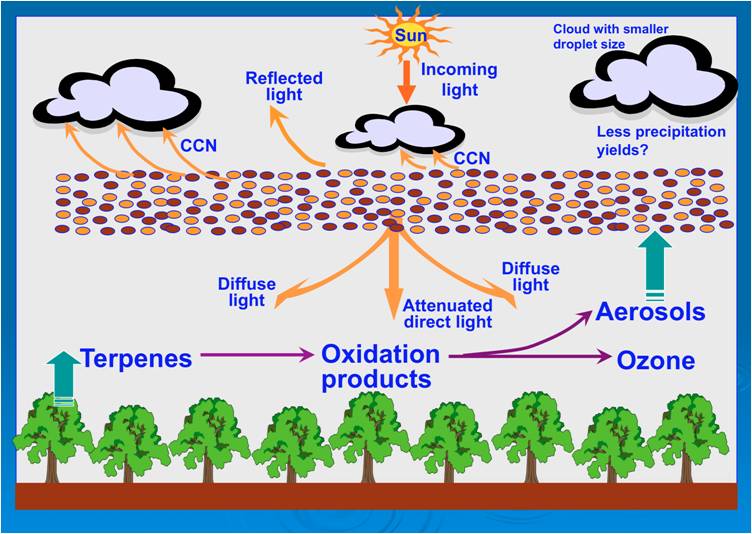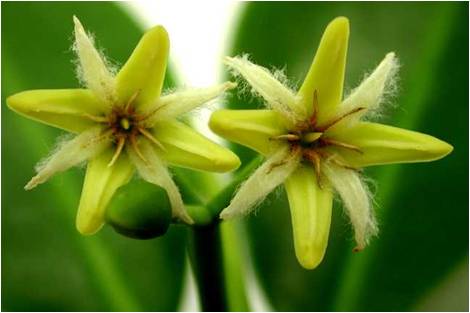
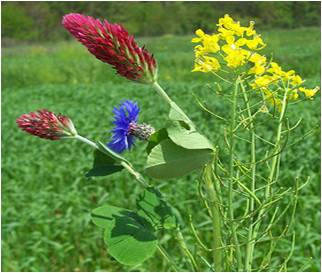
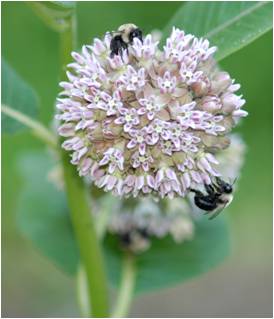
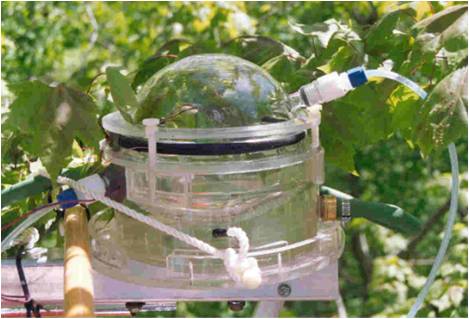
Hydrocarbons emissions and chemistry
Leaves and flowers release a plethora of non-methane hydrocarbons (NMHCs). Owing to their high reactivity, it is now well known that NMHCs can augment ozone formation in environments rich in nitrogen oxides. In jurisdictions such as the northeastern part of North America, this is a serious environmental issue as summer-time ozone levels frequently exceed the National Ambient Air Quality Standard set by the U.S. Environmental Protection Agency. As shown on the figure shown here, NMHCs such as terpenes can become aerosol precursors. Once in the local atmospheric boundary layer aerosols can scatter, reflect, and absorb incoming sunlight thereby impacting regional climate. Also, aerosols can become cloud condensation nuclei and thus influence cloud formation processes. Research in this area concerns field and theoretical investigations involving turbulent transport theory and chemical processing of biogenic NMHCs inside and above forests. Current work on this topic involves the development of measurement protocols to investigate the environmental and vegetation controls on hydrocarbon emissions at foliage and plant canopy levels. Numerical models are developed to determine turbulent transport and chemistry of NMHCs. Much of the current research involves the gas-to-particle conversion. Lately, we have been investigating the aerosol yields from hydrocarbon oxidation. The impetus of this latest research is to quantify the radiative forcing by phytogenic aerosols and to discern the influence of phytogenic aerosols on cloud formation processes. The hydrocarbon research is being carried in places such as Canada, Brazil, the Mid Atlantic region of USA, the Florida Everglades, and New Mexico.
Leaves and flowers release a plethora of non-methane hydrocarbons (NMHCs). Owing to their high reactivity, it is now well known that NMHCs can augment ozone formation in environments rich in nitrogen oxides. In jurisdictions such as the northeastern part of North America, this is a serious environmental issue as summer-time ozone levels frequently exceed the National Ambient Air Quality Standard set by the U.S. Environmental Protection Agency. As shown on the figure shown here, NMHCs such as terpenes can become aerosol precursors. Once in the local atmospheric boundary layer aerosols can scatter, reflect, and absorb incoming sunlight thereby impacting regional climate. Also, aerosols can become cloud condensation nuclei and thus influence cloud formation processes. Research in this area concerns field and theoretical investigations involving turbulent transport theory and chemical processing of biogenic NMHCs inside and above forests. Current work on this topic involves the development of measurement protocols to investigate the environmental and vegetation controls on hydrocarbon emissions at foliage and plant canopy levels. Numerical models are developed to determine turbulent transport and chemistry of NMHCs. Much of the current research involves the gas-to-particle conversion. Lately, we have been investigating the aerosol yields from hydrocarbon oxidation. The impetus of this latest research is to quantify the radiative forcing by phytogenic aerosols and to discern the influence of phytogenic aerosols on cloud formation processes. The hydrocarbon research is being carried in places such as Canada, Brazil, the Mid Atlantic region of USA, the Florida Everglades, and New Mexico.
